Prog Venezuela | Aditus, Estructura, Témpano, Equilibrio Vital
PQR-Disques plusqueréel recently re-released on vinyl four highly collectable jewels from Venezuela.
All four albums by Aditus, Estructura, Témpano, Equilibrio Vital are fully remastered and packed with unreleased studio and live tracks from the same period as the original albums.
“Music is an expression of the soul”
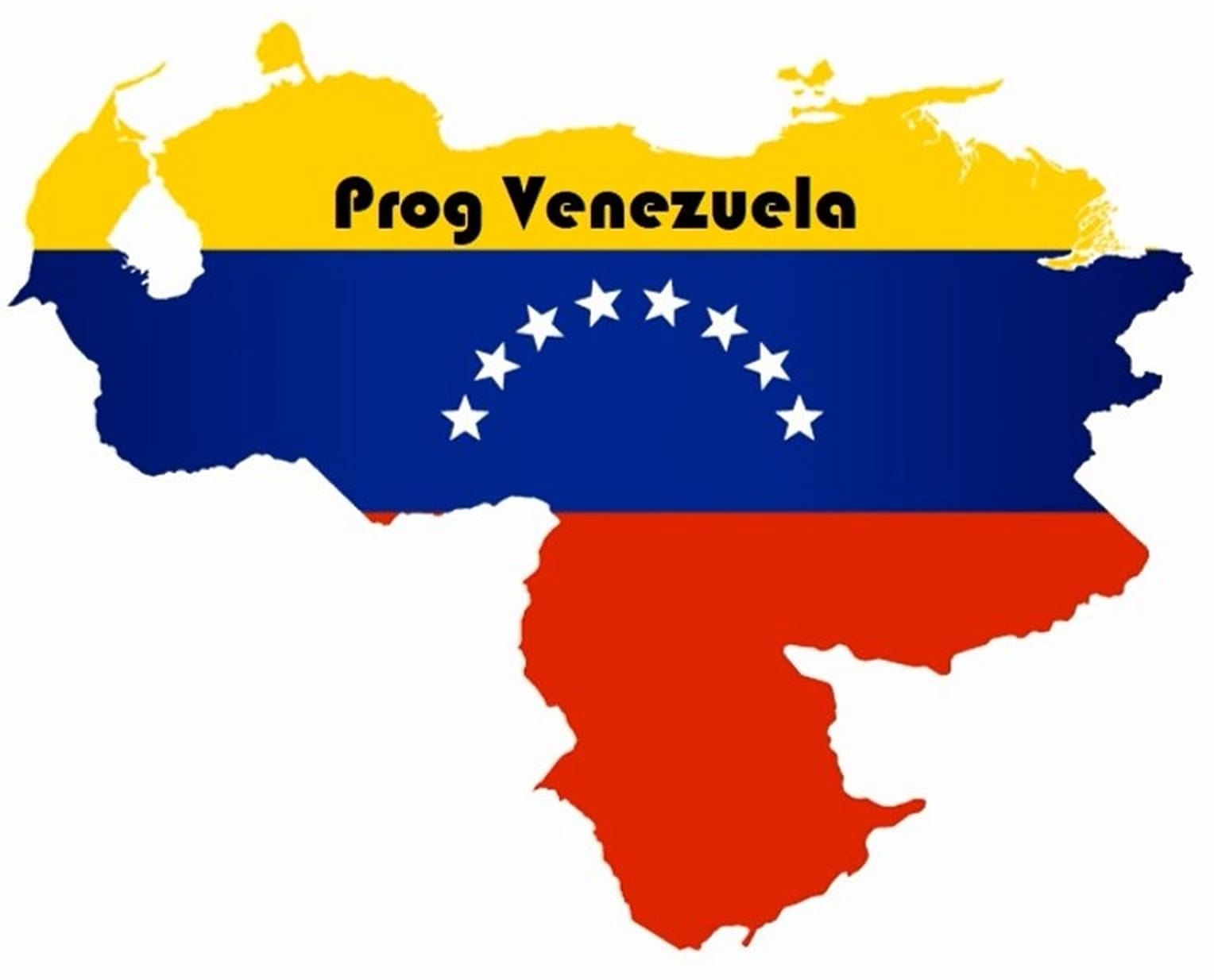
Aditus
The debut album by Aditus was originally self-released in 1977. It contains a high energy interaction between four outstanding musicians that were influenced by progressive rock and jazz fusion.
The album has been remastered from the original tapes and includes a bonus CD with a rare soundboard recording from one of the most spectacular live shows performed by Aditus in 1977, plus two previously unreleased studio tracks from the same period and a 12-page booklet packed with the original band-members’ memoirs, rare photos and paraphernalia.
The formative years 1975-1980 | Interview with Sandro Liberatoscioli (by George Rossolatos) | Previously published in Prog Archives
When did Aditus officially form and what was the original line-up? What changes were made to the original line-up throughout Aditus’ prog/fusion period?
Sandro Liberatoscioli: Like with many other bands, there was no official date, no birth certificate, it was a slowly evolving process. It goes like this: In 1967, two next-door neighbors, Edgar De Sola (drums) and Carlos Atilano (guitar) started a band in my own little hometown of San Jose De Los Altos, Venezuela. Shortly before the addition of yet another neighbor, Manaure Trujillo (bass), in 1971 the band was renamed into “Aditus” and was scheduled to perform at a large beach festival not far from Caracas, the “Festival De Los Cocos” on November 18th 1971. Sadly, the festival was cancelled at the last minute and Aditus didn’t get to make their debut.
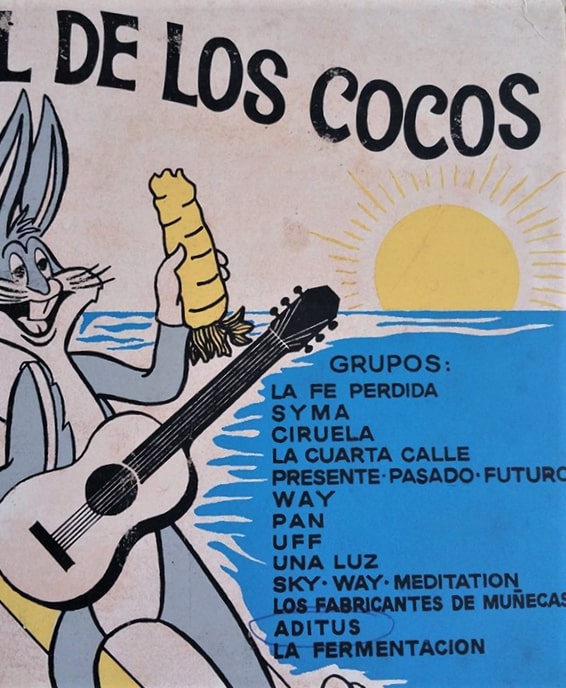
In 1972, I replaced Manaure on bass. The band played mostly small, private gigs as a trio. Later that year, Nicholas Nevinczenko joined the band as a lead guitarist. In 1973, Nicholas left and was replaced by Ignacio Lares (Hammond organ). In 1974 Alvaro Falcon (guitar) joined the band and, later that year, so did George Henriquez (vocalist). Under this sextet line-up, Aditus played their first major concert in March 1975 with tremendous success: two sold-out nights amidst traffic gridlock and commotion in the otherwise quiet neighborhood of Altamira, Caracas.
I think it’s fair to say that Aditus formed at the beginning of the 70s. In the following link you will find the sequence of the band line-ups thereafter.
Between which years were Aditus performing in a prog/fusion vein and which albums were released during that period?
I would say from the beginnings through the early 80s, when we started migrating towards pop rock. This link includes the band’s discography.
Share with us some of the most memorable moments from your early period live shows. How do live audiences compare between the 70s and your later, more pop-oriented followership?
In the Venezuela of the 70s there was no infrastructure to support an aspiring band like us, so we became some sort of informal “organization” that included the musicians and their closest friends, fans and families. This enthusiastic crowd did everything involved in the production of concerts and beyond, from obtaining permits, selling the tickets, promoting the events, security … you name it, we did it all, the band was our beloved hobby. By the time we got to the 80s we already had some paid assistants, roadies, et cetera which gave us some more time to focus on our music. After signing our first large recording contract with Sonografica, 1985, we were finally able to focus mostly on just writing and performing, they took care of pretty much everything else. Our live audiences in the 70s were, in general, more versed and discerning, many were actually musicians, they focused more on the instrumental part of our work, whereas the live audiences in our pop rock era care more about the lyrics and the overall character of the band; they are louder too.
What were your main influences at the time you recorded ‘A Traves de la Ventana’?
Herbie Hancock, Chick Corea, Oscar Peterson, Eric Clapton, Santana, Blood, Sweat and Tears, Chicago, Jimi Hendrix…
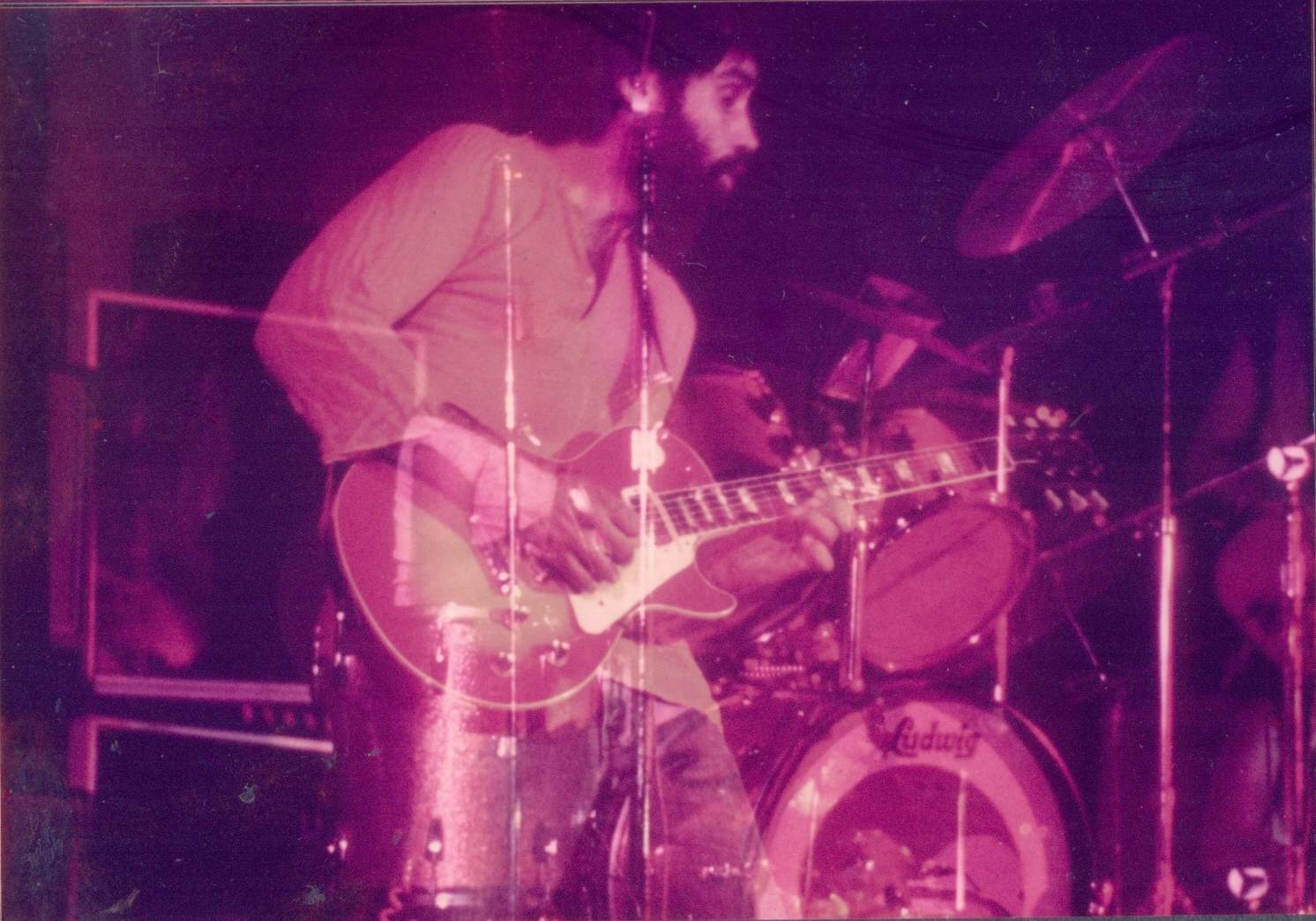
The album was self-released. How come you didn’t pursue a label contract, as with your second album that was released by WEA?
At the time, no record company in Venezuela was prepared to take that risk with a band that played what was perceived to be “foreign music,” a relatively small market segment.
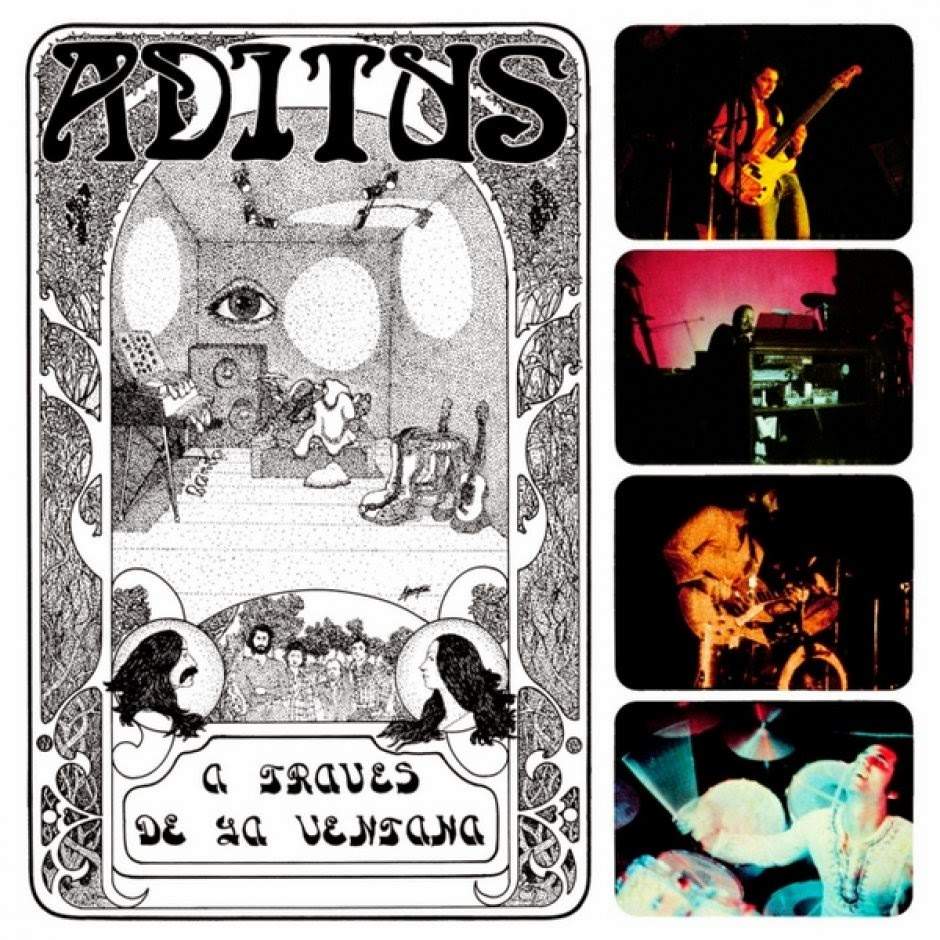
What sort of technical constraints did you face when you were recording your debut album that could be easily managed with today’s technology?
Only four channels to record everything, inside a garage, that says it all!
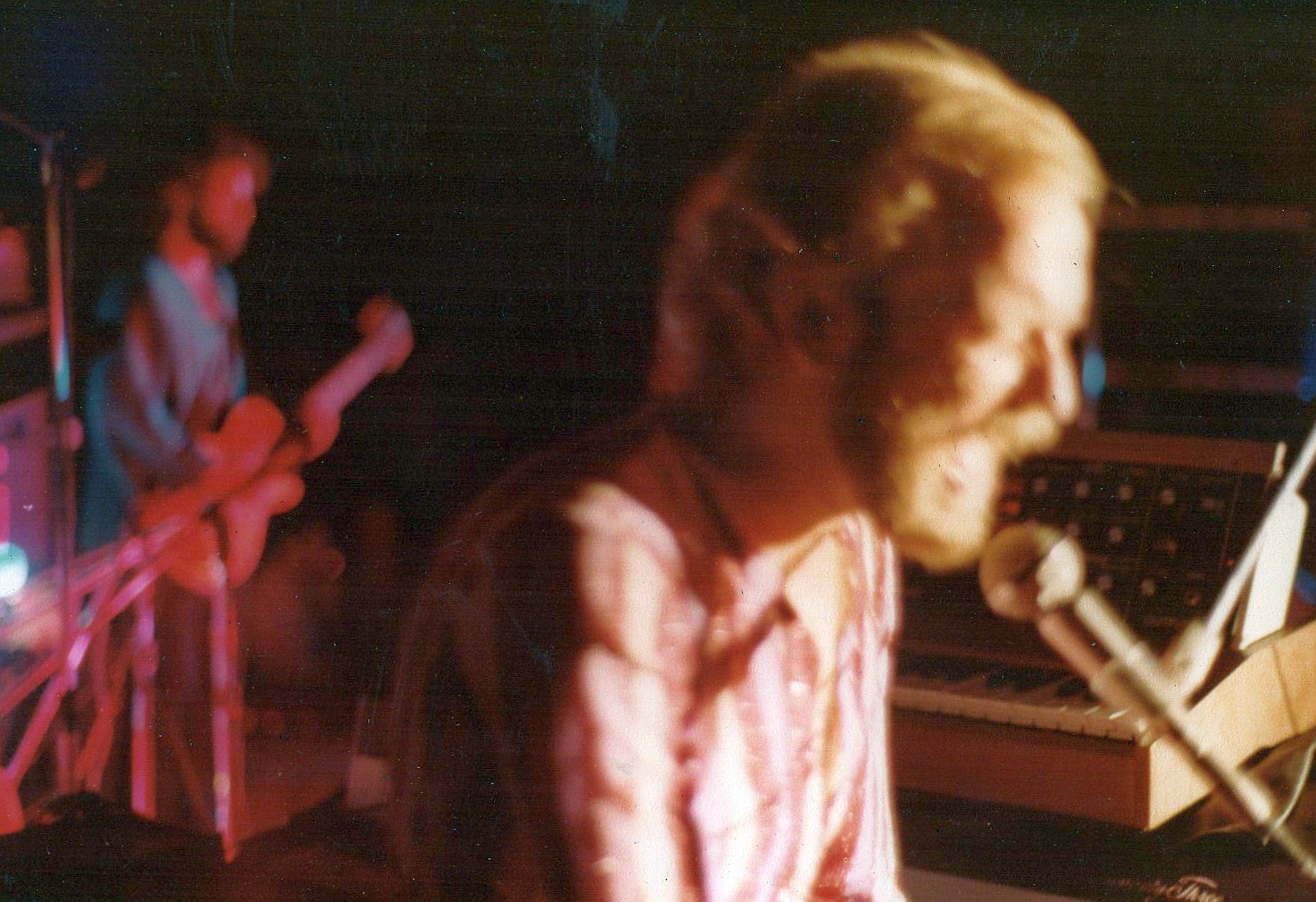
When and under what circumstances did you decide to abandon the prog-oriented path and pursue a more commercial sound? What did you lose and what did you gain in the process?
We were always flexible in terms of style while keeping an eye on new trends which caused us to evolve progressively. In the early 80s, following the advent of new wave, we felt the need to include more lyrics in our work. That proved to be a good move as it expanded our audience and eventually led to our first record deal.
Did you receive recognition outside of Venezuela during the 70s/early 80s prog years (e.g. gig/album reviews by the foreign press), and if yes, from which countries?
Because of our style at the time, it was hard enough to get attention in the Venezuelan market, so we didn’t pursue any serious initiatives abroad. I do remember us getting some coverage from a Japanese rock magazine, though.
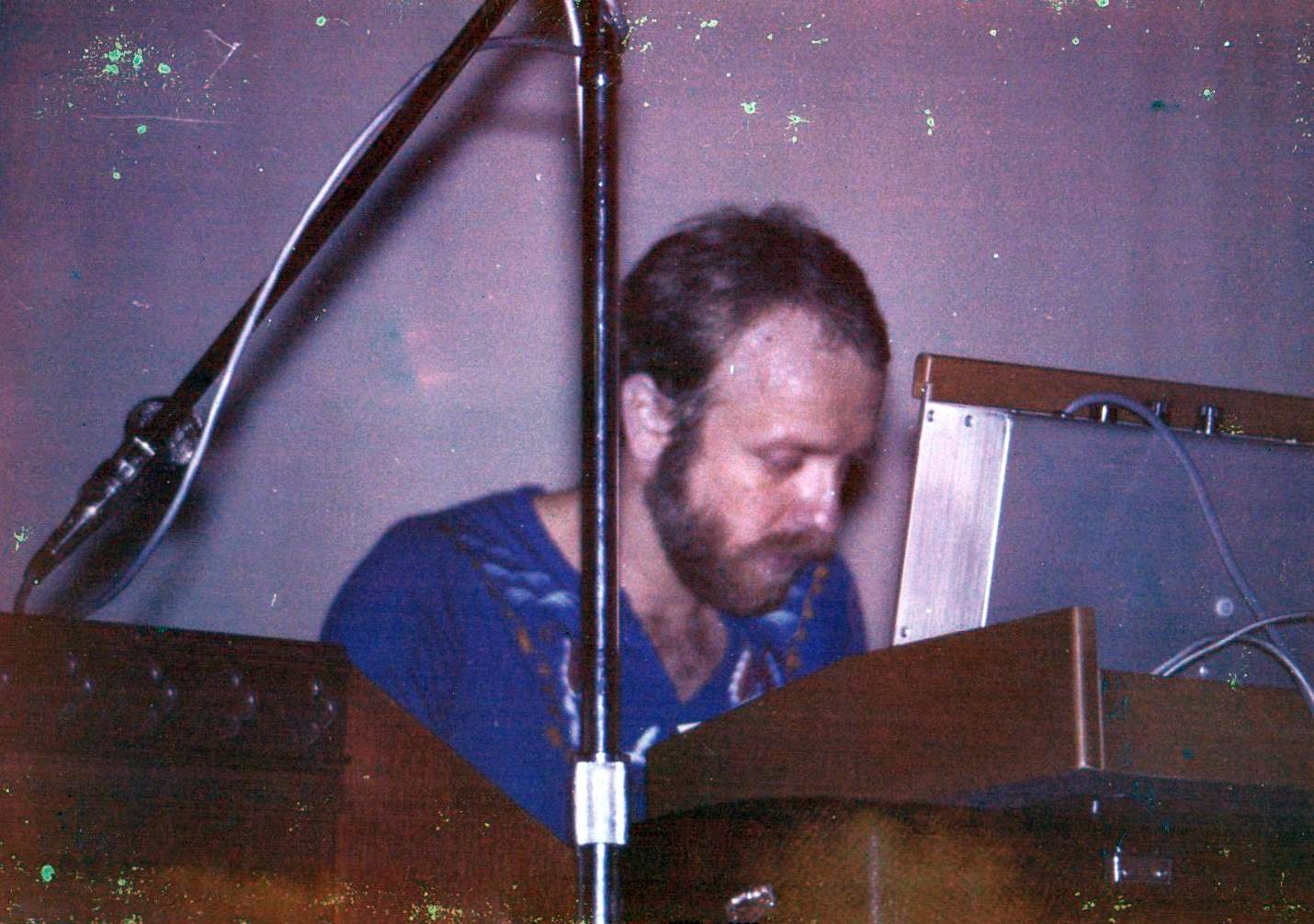
How would you describe the contribution of Pedro Castillo when he joined Aditus in catapulting the band to pop stardom? What did he bring to Aditus in artistic and image terms?
Pedro was a great addition to the band. He brought a unique voice that complemented that of George as well as a talent for composing fresh, catchy melodies. He was quite enthusiastic and fitted right in.
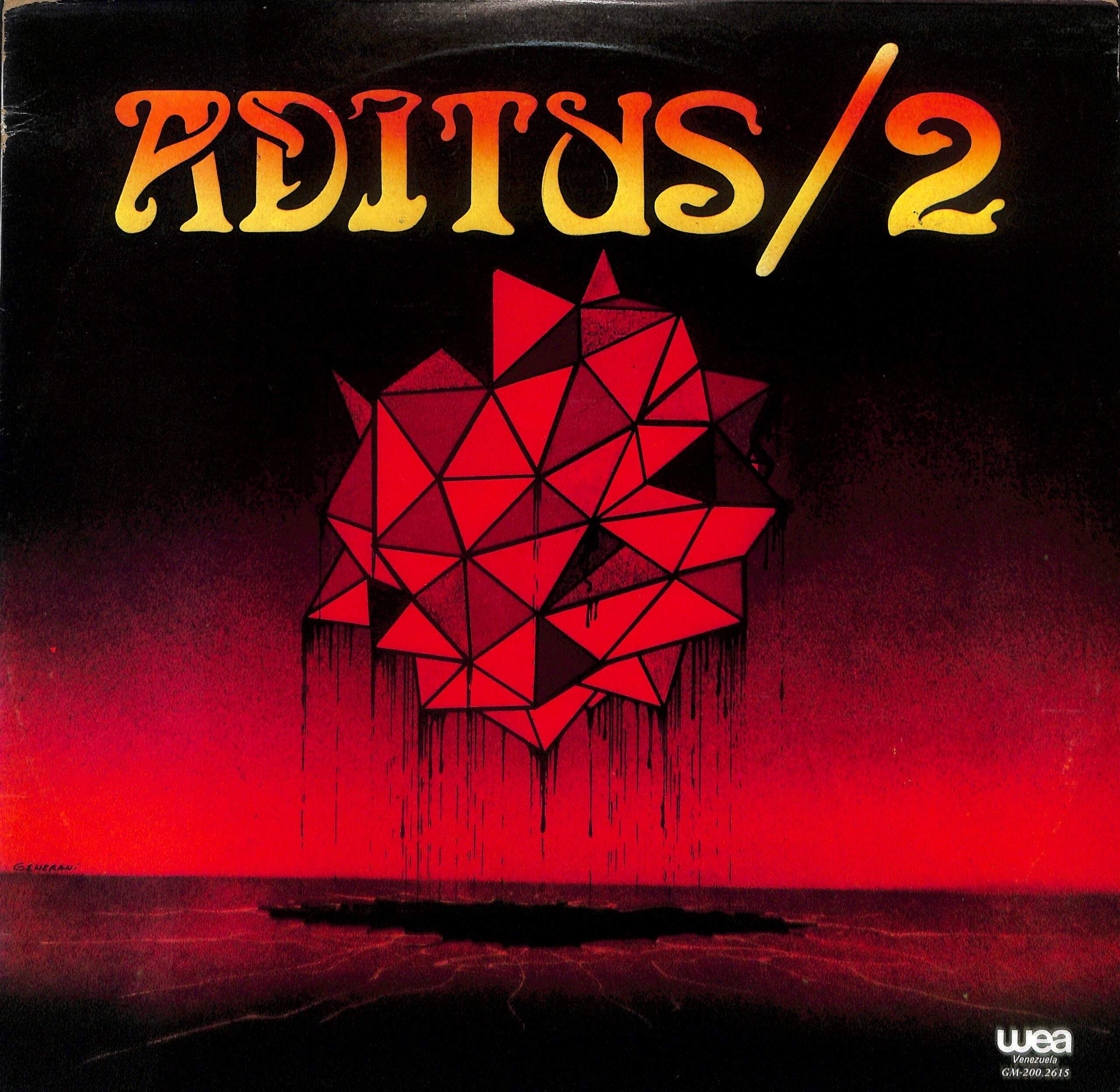
The band has remained inactive for some time now. What has each member been up to ever since your official disbanding?
I left the band in 1991 and moved to the US with my family to work as a Marketing executive in NYC. I retired in 2001 and moved to Florida with my wife. I have recently started reacquainting myself with the bass guitar and the world of music which I had missed for 30 years. It makes me feel a little like Rip Van Winkle. The band has remained active all along, though.
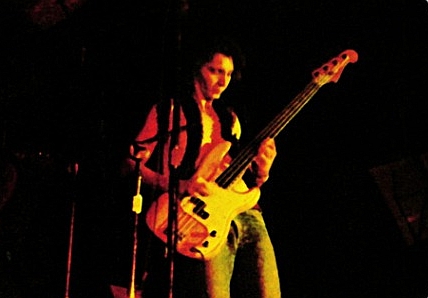
Have you been listening to emergent and by now established genres such as prog metal? Are there any neo-prog bands that have attracted your attention? What do you think about the contemporary scene and the proliferation of bands compared to the 70s when only a handful were in existence? Does the quality of contemporary musicianship compare to the scene’s forerunners or gems are getting more scarce to locate amidst the hype?
Nowadays, the public gets bombarded and overwhelmed with tons of musical options from multiple flanks. That’s particularly challenging for the artist as it makes it harder to stand out. However, yes, the gems are still out there, they’re just harder to spot.
What are your perceptions about the relationship between bands and contemporary fandom, in a social media dominated age where 1-2-1 relations may be formed between individual fans and bands? Does the effacement of the distance between fans and bands contribute in any manner to the loss of an artist’s aura and the role he may perform in a fan’s life? How would you describe the pros and cons with regard to this matter?
I’ll let my fellow band members answer this question as they have remained active all these years and have experienced this phenomenon first-hand.
Some of you have pursued parallel professional lives alongside your roles as musicians with Aditus. How have you been managing your dual roles? Can you describe for us the transformative process when you were preparing to appear live?
We all went through that experience together for decades. I think it made the band more interesting, many people were intrigued by that, it came up early during any interviews. We enjoyed our career duality and changed hats with the normality of those who work a second job. Not much of a transformation needed, just put on your concert attire and jump on stage, do your thing!
Estructura
Estructura is one of the first progressive rock outfits that formed in Venezuela, with a pure symphonic pedigree.
Both of their albums feature stellar musicianship, an explosive co-existence of neo-classical with hard-prog, punctuated by celestial keyboards and interspersed with ethereal vocals, a hyperreal space where moog twists anchor mood swings and provide syntactic orientation to a passionate trajectory in constant flux. A collectors’ gem, hard to find in pristine condition, fully remastered in a limited pressing of 300 copies.
Interview with David Maman (by George Rossolatos) | Previously published in Prog Archives
When did Estructura officially form and what was the original line-up? What changes were made to the original line-up throughout Estructura’s different progressive periods?
David Maman: Estructura formed in 1975, playing Brazilian music. The original line-up consisted of Maria Eugenia Ciliberto (guitar/vocals), Antonio Rassi (guitar/vocals), Walter de Joung (keyboard), Walton de Joung (drums), Mercedes Godoy (vocals), Andreina Lopez Mendez (vocals). In 1976, the new line-up consisted of Maria Eugenia Ciliberto (guitar/vocals), Antonio Rassi (lead Guitar/vocals), David Maman (keyboard/vocals), Domenico Prioretti (drums/vocals), Agni Mogollon (bass/vocals), Marisela Perez (lead vocals), Walton de Joung (percussion).
‘Mas Alla de Tu Mente’ is the first progressive album that was released in Venezuela at a time when the genre was little known among local music fans. Can you canvass the sociohistorical context at that time, the dominant music genres and the circumstances that drove you to the selection of this genre as your main musical enclave?
The music we played was different to the music that was played on the radio and concerts. Although rock bands were not popular in Venezuela at that time, it became oursound. We were sending a message about a different world through youthful eyes and sound.
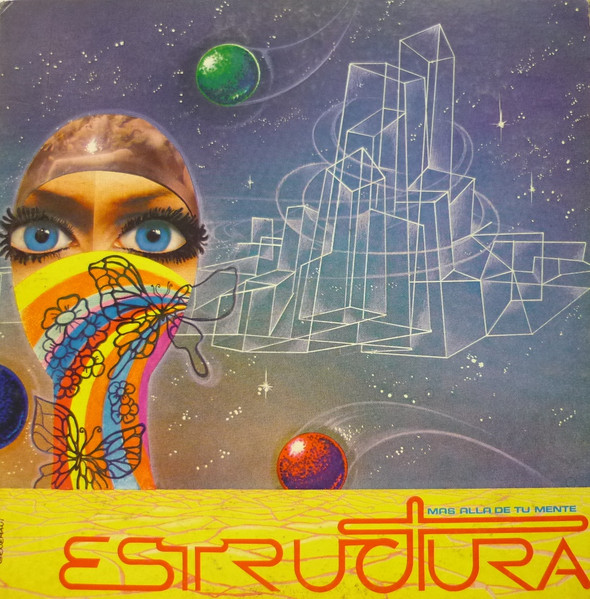
What were your main influences at the time you recorded your first two albums?
I was trained in classical music. In high school I was listening to different musical styles such as Rick Wakeman, Emerson, Lake & Palmer, Genesis, Queen, Led Zeppelin, Larry Carlton, to mention a few.
‘Mas Alla de Tu Mente’ is a concept album. Can you guide us through the main themes that permeate its conceptual fabric?
The meaning of the name “Mas Alla de Tu Mente” is “Beyond Your Imagination.” We wanted a place that allowed us to dream outside of our daily life. The beginning of the story describes our departure from our planet in search of a different universe, our own imagination. The music reflects the power it took to depart from Earth. Once we arrived at our destination, it was a beautiful and peaceful place, where people only knew Love, Compassion and Generosity. We met the inhabitants who showed us the way we should coexist with each other and with nature. After spending time in this place we were ready to come back and bring with us what we learned. “Remember your mission is to spread Love, if you look inside yourself, you will find it.”
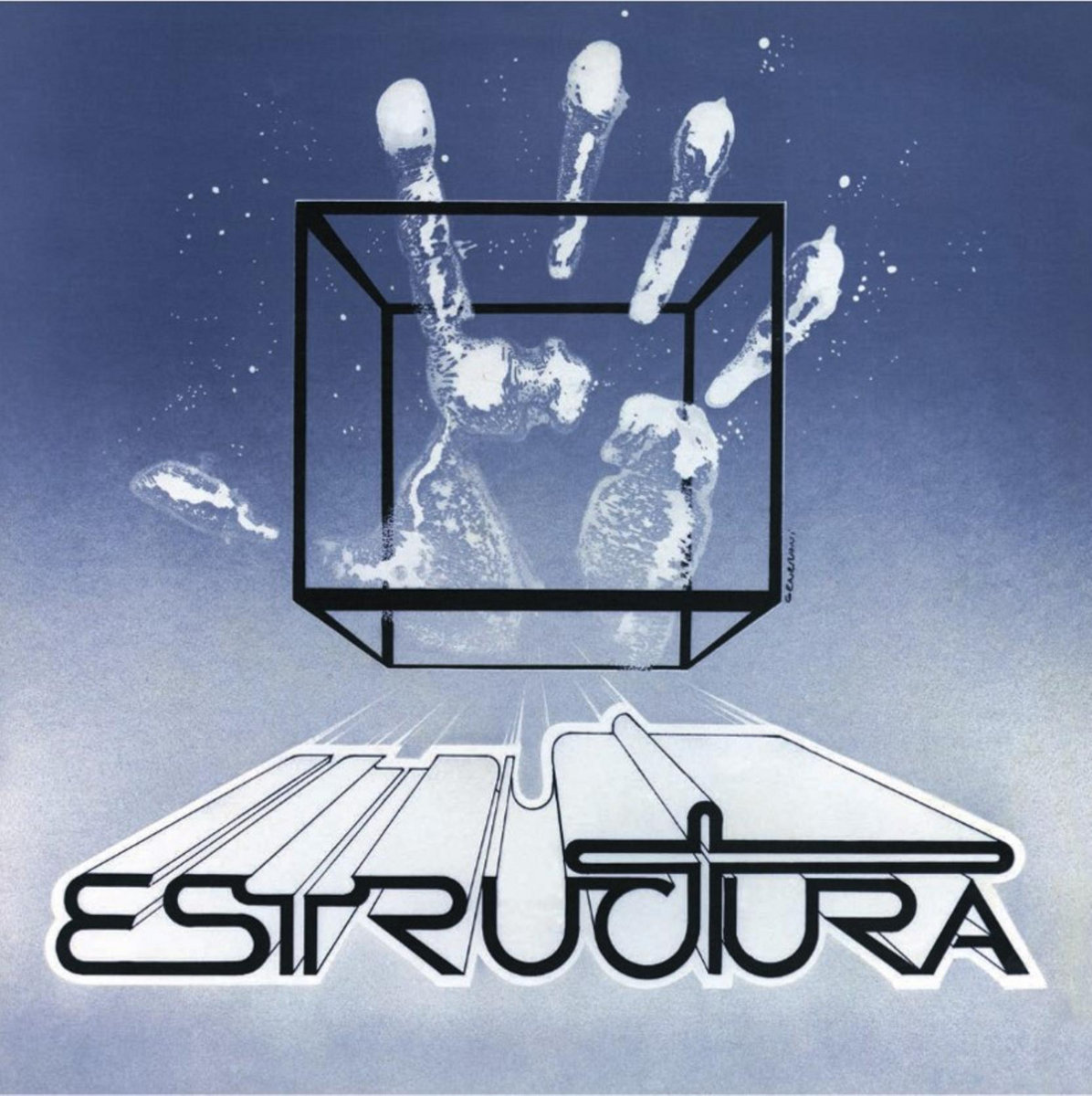
Why did the group disband after two phenomenal albums?
While being a musician, I was accepted to study Architecture and Urban Planning in Israel, so I decided to go to Israel and become an Architect. The band did not continue after that.
Was Estructura recognized outside of their homeland while being active to the same degree that they are recognized today in the global progressive establishment?
At that time there was not much Venezuelan music played elsewhere.
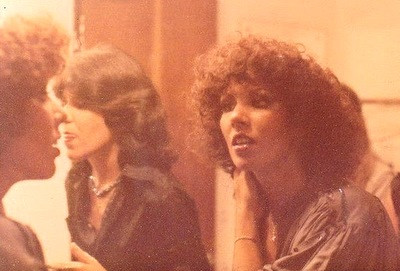
What sort of career paths did the band members pursue after its dissolution? Do you still maintain contact with each other?
After the dissolution of the band, the members continued in different directions. Maria Eugenia Ciliberto continued playing and works in advertising. Antonio Rassi formed several bands, “Etzal”, “Faranheight,” and works in advertising. Agni Mogollon continued playing music, formed “Gina & Agni,” and later on moved to the United States. Maricela Perez continued singing and recording, unfortunately she passed away. Domenico Prioretti became an architect and moved to the United States. Walton De Joung moved to Curasao. David Maman, after graduating from Architecture School in Israel, moved to Los Angeles where he established his Architectural Firm.
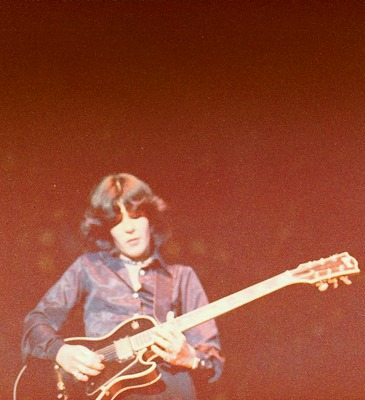
David, you were the main composer of Estructura’s songs. Can you share with us details about the compositional process you followed?
Maria Eugenia created the story, wrote the lyrics and I composed the music. Sometimes I received the lyrics over the phone, and an hour later I would play the melody I had just composed. It was a beautiful collaboration. After that, we would hold weekly rehearsals where each member would contribute to the final arrangement.
Share with us some of the most memorable moments from your early period live shows. What was the largest audience in front of which you performed, when and where? How do live audiences compare between the 70s and nowadays?
At that time, there were not many rock bands in Venezuela. In 1976, a decree was issued by the government that required radio stations to play a song by a Venezuelan artist for every foreign song. This is how our music began to be heard. In 1977, we were invited to play with the band “Meco” (Star Wars) in the largest stadium in Venezuela “El Poliedro de Caracas”. We played in several stadiums in different cities. Since our music was not typical Latin Music, younger audiences were very excited to hear a different progressive style.
Estructura’s live shows are reputed to be full-fledged theatrical performances, also featuring a choir. It is a real shame that no footage exists from those memorable shows. Can you describe to us what types of arts were blended with your music on stage? Were you influenced by operatic performances in your approach to staging live shows?
The story of ‘Mas Alla de Tu Mente’ included the music with lyrics, instrumentals, and a narrator. It was not a song-by-song concert, but a whole story that allowed us to retain the attention of the audience throughout the entire concert. We had the opportunity of including a chorus as part of the first album and in some concerts.
How difficult was it back then to release progressive albums in Venezuela?
It was not very common to play rock at that time. We were lucky to be accepted by the public.
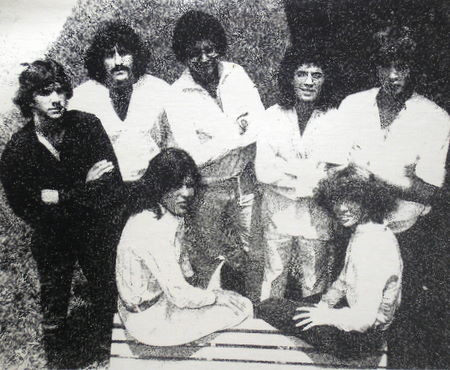
What sort of technical constraints did you face when you were recording your debut album that could be easily managed with today’s technology?
Our first album, ’Mas Alla de Tu Mente,’ was recorded in Larrain studios, using 4 channels. The recording was difficult, as we recorded in 3 channels and then had to transfer all 3 channels into the 4th channel, and then we had 3 extra channels to record, and so on until all the instruments had been recorded. The quality of the sound deteriorated after re-recording. The second album, ’Estructura,’ was recorded in the Estudio Del Este, in 16 channels, which allowed us more freedom and possibilities.
Which progressive band mates would you name from Venezuela and abroad in the 70s? Bands you toured with or used to rehearse in the same place? Were you acquainted with any of the seminal bands that are featured in PQR’s celebratory Prog Venezuela releases, that is, Aditus, Tempano and Equilibrio Vital? If yes, in what capacity and how would you describe your relations?
Aditus, Tempano and Frank Quintero were some of the bands we met, listened to and shared stages.
What sorts of cultural resources (books, artists, movies, folk myths) have been influential in molding your individual artistic persona and vision?
I listened to classical music in my youth. Later on, a childhood friend introduced me to all kinds of music, from Led Zeppelin, Yes, Genesis, Rick Wakeman, Queen, Larry Carlton.
What do you think about the contemporary scene and the proliferation of bands compared to the 70s when only a handful were in existence? Does the quality of contemporary musicianship compare to the scene’s forerunners or gems are getting scarcer to locate amidst the hype?
The quality and level of musicianship has improved, but also the variety of the music genre has made it more difficult to follow the type of music that I want to hear.
What are your perceptions about the relationship between bands and contemporary fandom, in a social media dominated age where 1-2-1 relations may be formed between individual fans and bands? Does the effacement of the distance between fans and bands contribute in any manner to the loss of an artist’s aura and the role he may perform in a fan’s life? How would you describe the pros and cons with regard to this matter?
In the past, it was easier to relate to the artists, the writing, the music, the bands. A record was introduced to the world and then you would listen to the music on the radio and at concerts. You were not as familiar with the person who created the music. The artist was bigger than life. Holding a record in your hand, and being able to read the lyrics and look at the artist’s vision was what connected you with the music. I feel like today you know so much about the artist personally, through social media, that the uniqueness, the essence of the artist is lost.
Some of you have pursued parallel professional lives alongside your roles as musicians. How have you been managing your dual roles?
I think that once you are involved in music, record songs and play on stage, you will always remember the joy it gave you. To be successful in any profession, you need to dedicate yourself completely. You always hope that you can play again. Some of us played at different times and in various ways. While studying Architecture I was working as the musical director of a choir. I dedicated my professional career to Architecture, designing commercial and residential projects, specializing in hillside homes. Over the past 3 years, I have been able to fulfill a dream I always had, to connect with several musicians from Venezuela with whom I recorded several songs that I wrote in the past, currently playing on all streaming platforms and performing in smaller venues.
Témpano
‘Åtabal-Yémal’ by Témpano was recorded in 1979 and it’s a gigantic clockwork formation of perfectly synchronized small parts that melt into surreal supple space. At times, symphonically weeping woodwinds in dialogue with zeuhl at its darkest.
The album has been remastered from the original tapes and includes a bonus CD with previously unreleased tracks from the ‘Åtabal-Yémal’ 1979 recording sessions, plus live tracks and a 12-page booklet packed with original bios, photos and paraphernalia. Furthermore, this edition features for the first time the very original cover that was intended for the initial ‘Åtabal-Yémal’ release.
Interview with Pedro Castillo (by Klemen Breznikar)
Was there a certain moment in your life when you knew that you wanted to become a musician?
Pedro Castillo: As soon as I started to play my first acoustic guitar and began to figure out those wonderful chords that Steve Hackett played in the 70’s Genesis records, I knew it then.
Tell us about the very early days. Were any members part of any other bands before forming Témpano?
Gerardo and Miguel played with Magia, a local band in their neighborhood. I played in Diedra, a trio that rehearsed close to Magia. At the time our drummer went to university in the USA and Magia’s guitar player went to France to continue his studies, the next step happened, the remaining members of both bands fused to form the first generation of Témpano.
Where did cool kids hang out back then and how would you describe the scene for those interested in Rock music? What was it like back in the 70s?
In Venezuela rock concerts of local bands took place in theaters. Life was very different and safer. Usually after rehearsals we went in one of our cars to the mountain side of the city and drove around listening to music. Also on Saturdays we were looking for parties where we were not invited and gate crushed; DJ’s used to play ‘Dark Side of The Moon,’ the whole side B and everybody danced! There were some amazing radio shows, we discovered so many bands because of them, and there were some great bands playing concerts, Vytas Brenner, Frank Quintero and some others, so gigs were part of our lives.
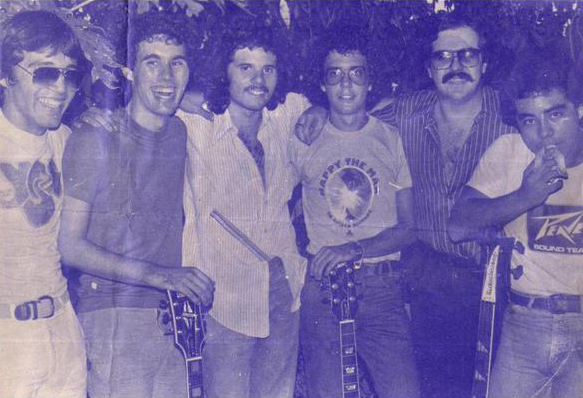
So were there any clubs that local bands could play?
In the 70’s only a few clubs. Mainly jazz and Latin music, we played in theaters, universities and social clubs. Then, in the 80’s some more clubs opened where rock and cover bands got to play and in the 90’s everything changed for the better.
What led to the formation of Témpano?
Our shared love for progressive rock and the friendship we developed with the two bands I mentioned above.
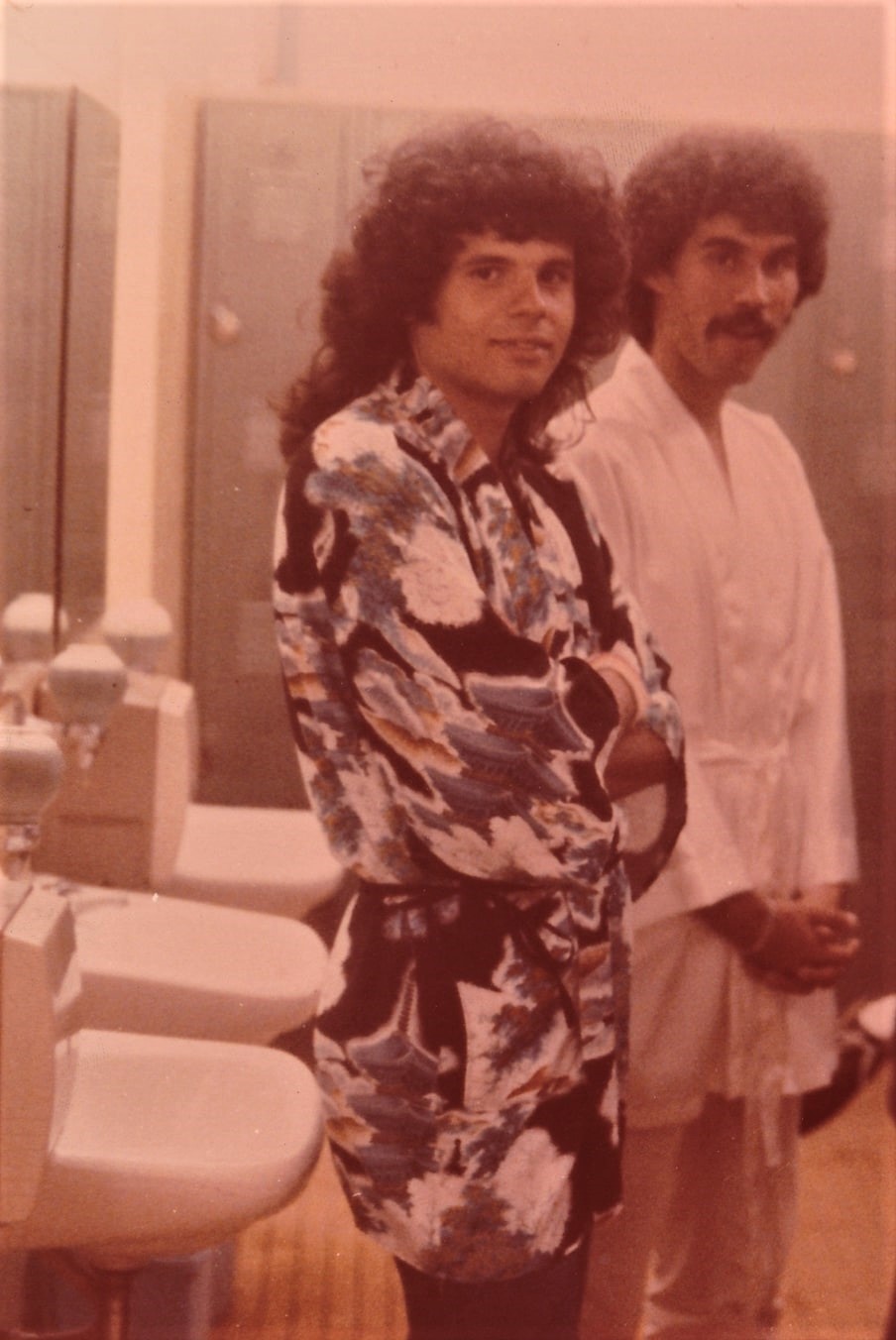
Did you have a certain creed in the band, meaning that you wanted to follow a certain musical direction?
Our first incarnation was two guitars, bass and drums. Instrumental music with influences from bands like Wishbone Ash. Then we added keyboards and started playing more symphonic rock. I saw Happy the Man in DC and once back in Caracas. I played the Happy the Man album for the rest of the band and they loved it. I can tell you that Happy the Man and Genesis were the next direction, later on we were influenced by other bands we were into at the time, like Premiata Forneria Marconi, Banco, La Maquina, Return to Forever, Talking Heads. Cesar was and is a Wagner and Beethoven devotee; it is this amalgam of styles that created the particular sound and style of Témpano.
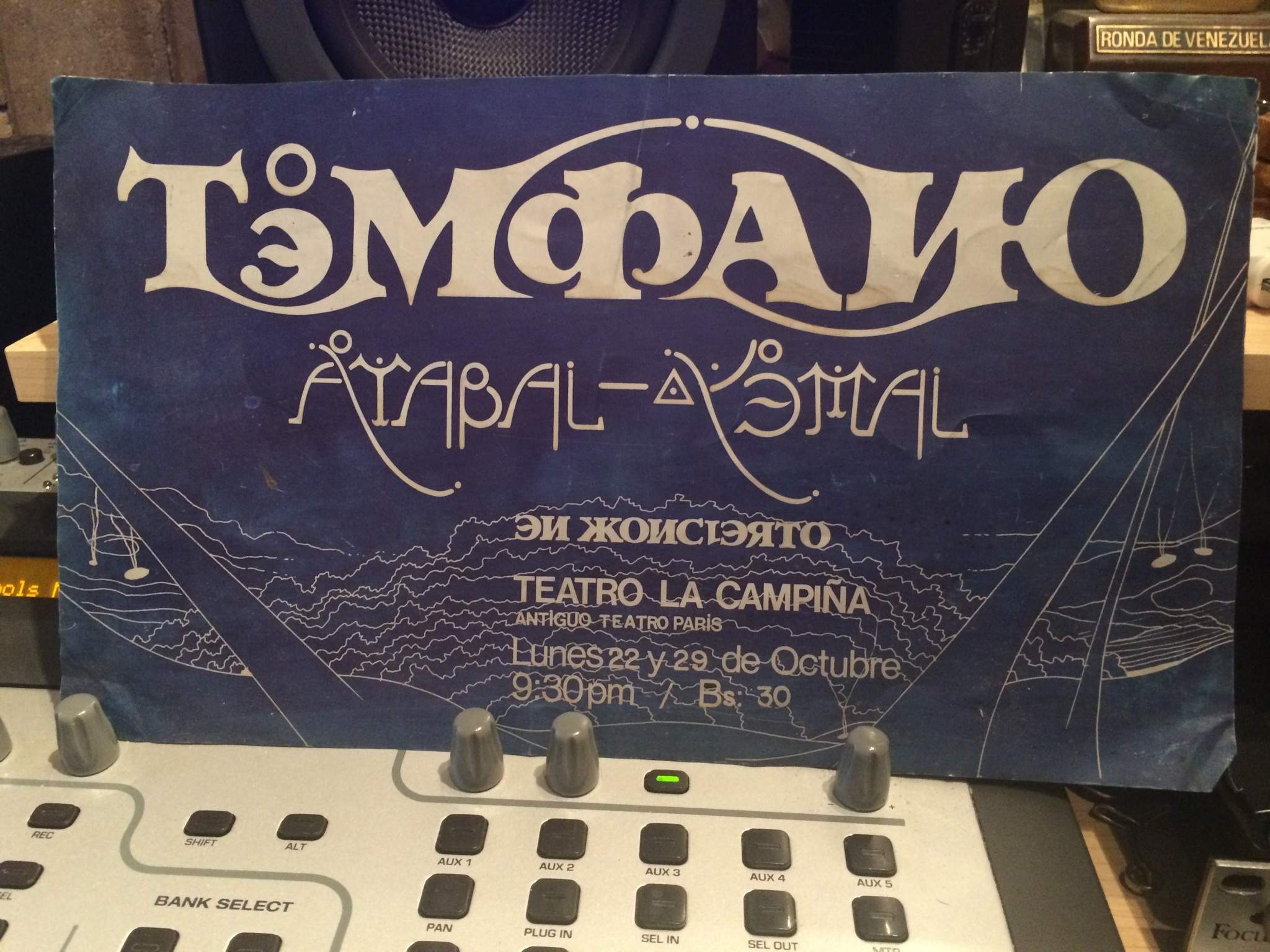
What’s the story behind your debut album? Was it self-released? If so, how many copies did you press? Did you sell them at shows or even send them to any radio stations or labels?
Yes. It was self-released, but we had help from a producer and an amazing graphic artist, both of whom were very enthusiastic about our music, had a lot of faith in us and were determined to make the album possible. Two editions of 1000 copies each. We went directly to the record-stores where we used to buy records. I remember that one of the songs got some air-playon the AM radio. There were no FM radio-stations in Venezuela in the 70’s!
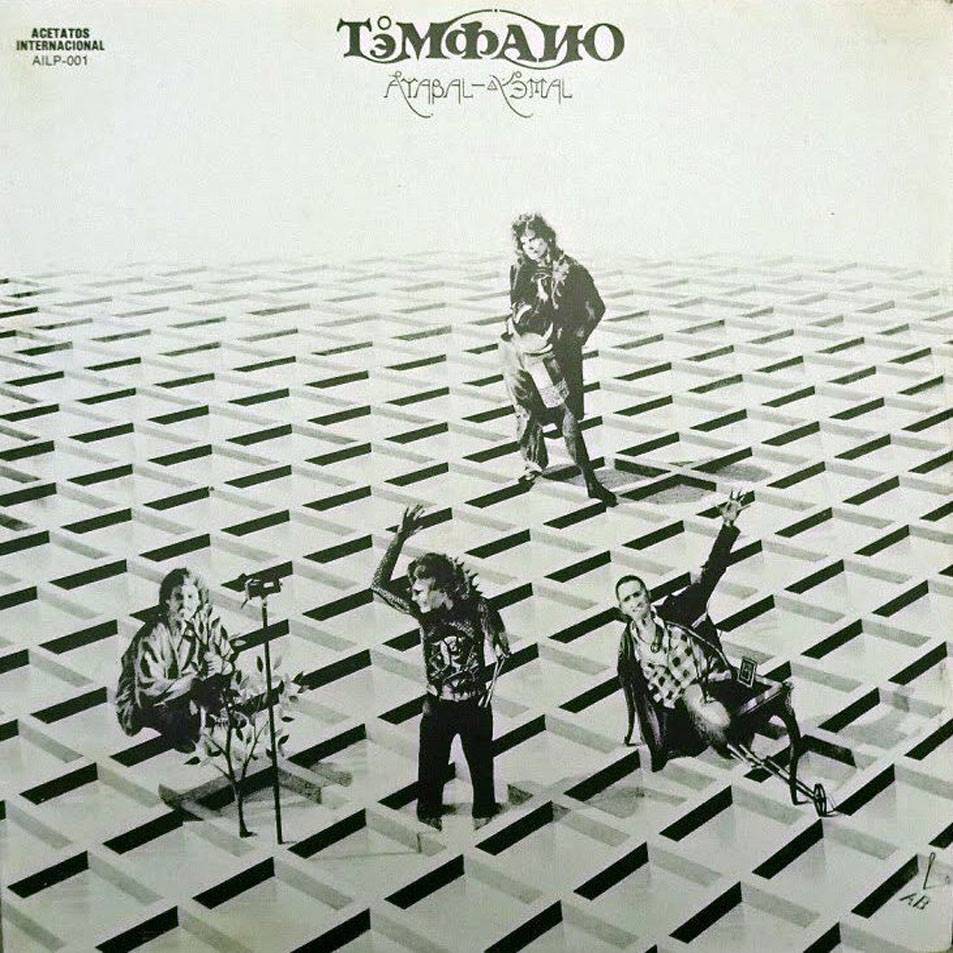
You must be excited about the upcoming PQR-Disquesplusqueréel reissue? How did that come about?
Really excited and happy that PQR is giving our first album a deluxe treatment. Initially George Rossolatos (of PQR) contacted me via email. I remember he was asking about Aditus’ first album, which is part of the Venezuelan reissued series, and because after Témpano I played with Aditus he thought I could help (yes, I could), so I involved Alexis Lope-Bello who is part of our band and he got in contact with George and helped him to get in touch with the rest of the bands included in the Prog Venezuela series, so 4 bands for now, some more to come, I hope.
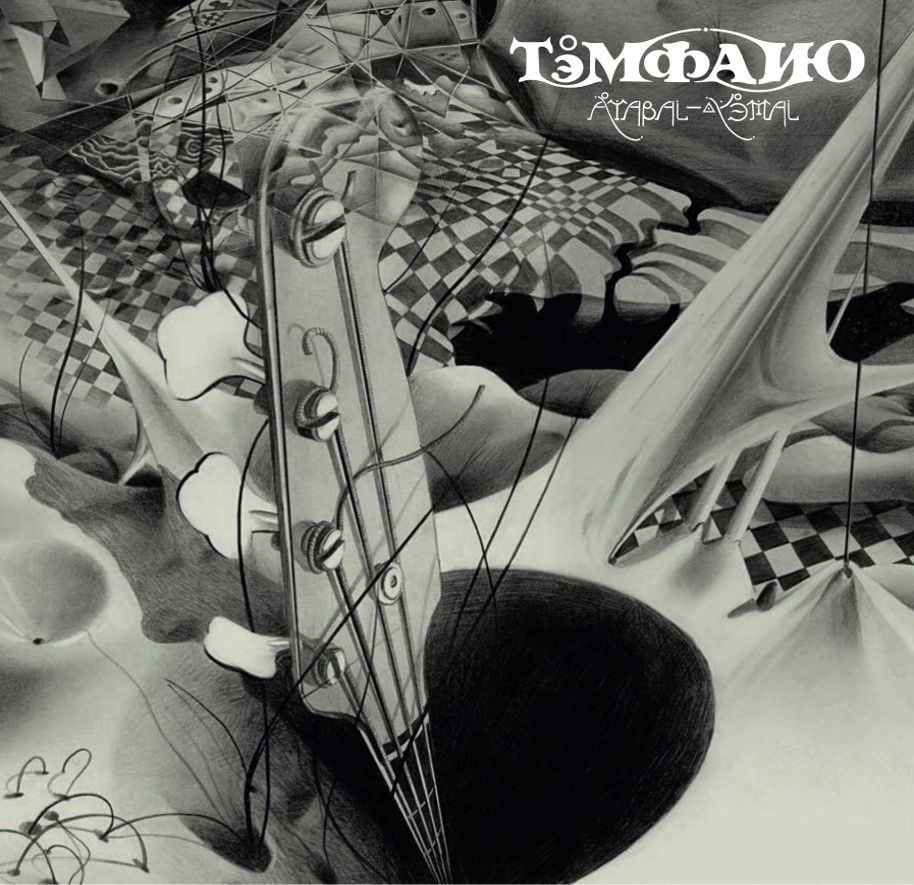
The album sounds really good considering it was more of a DIY job. How did you manage to do that and what kind of gear did you have?
It was not really all DIY, we had help from a professional team, we recorded the album in the same studio where Vytas Brenner was recording at the time, and due to technical issues we used his keyboard gear instead of ours.
We had good instruments. I remember my Gibson Les Paul which I regret I had to sell to buy my first Strat which is still with me. Gerardo had a Ludwig Octaplus drum set. Miguel loved to buy basses and change parts from one to another. We were lucky to book some time at Odisea studios in Caracas with a Teac 8-track machine and a Teac mixer. Before that, we recorded some rehearsals with semi-pro equipment from a friend. You can listen to some of these recordings as part of the bonus CD tracks in PQR’s anniversary vinyl edition of ‘Åtabal-Yémal’.
Would you share your insight on the albums’ tracks?
Album tracks can be seen in two groups. Three instrumentals and three with lyrics. The instrumental songs go from jazzy mood (‘Cascada’) to very intense avant prog rock (‘Åtabal-Yémal’), while in the other group of songs we have a pastoral ballad (‘Anhelos’) and a song with strong classical influence like ‘Presencias y Ausencias’. It is also important to mention that it was our different influences that had an impact on the compositions. We were listening to ‘La maquina de Hacerpájaros,’ Wagner, Beethoven, Crimson, Happy the Man, Gentle Giant, Return to Forever, a very eclectic mix of music.
Did you play a lot of shows? Tell us about some of the most memorable concerts.
We played more often in those early years. A memorable one was the formal launch of ‘Åtabal-Yémal’ in Teatro Paris in Caracas. A beautiful and big theater. Alberto Barnola (the art designer) suggested that we have light tubes on stage, so we went to a fabric store in Caracas and bought yards of fabric, and built tubes from the ceiling to the floor with lights inside.The visuals were hallucinating!
How did you get signed to Color and would you mind sharing some words about the record that followed.
We were part of a tour in Venezuela that included 7 bands playing large venues, we were exposed to audiences of over 10 thousand persons, the public was very enthusiastic and supportive and Color saw an opportunity to promote our music and the band. We were also playing live more often. That formation of Témpano, after ‘Åtabal-Yémal,’ became very successful in Venezuela. I wasn’t a part of it, as at that time I was playing with Aditus and PP’s.
Are you still an active band? Your latest release is ‘Nowhere Now Here’ and was released in 2016.
Yes, I’m in the band! The members who recorded ‘Åtabal-Yémal’ got together again in 1998 after many years in separate ways and since then we have done some recordings that make us very proud. Our latest is Nowhere Now Here and personally my favorite. Témpano has been together for the last 25 years, we really enjoy playing together, not often unfortunately and yes, we are a bit slow because we all have responsibilities besides the band. I don’t intend to stop.
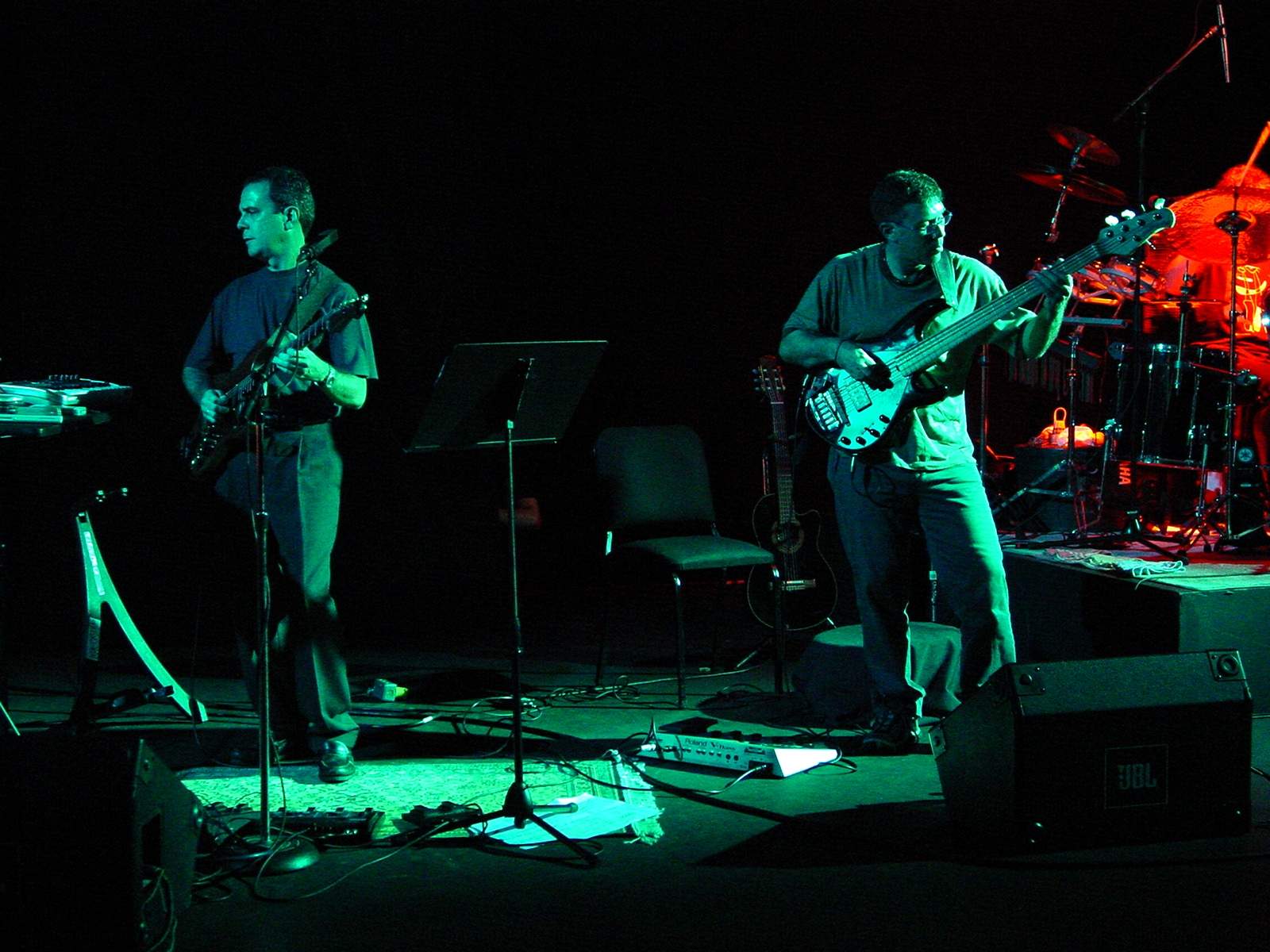
Can you share some further words about this record?
This record is like a tour of all our life in music. You can hear some flashes of old times blended with touches of modern contemporary music, but above all it is a record where we flowed free, like all other recordings, we just did as we pleased, no pressure on our musical expression. We always bring fresh ideas, but when we start playing, we let go and see what comes out. We had a great time recording it in Miami and soon after we rehearsed the album entirely, we played the whole album live a few times, we always have a great time playing together.
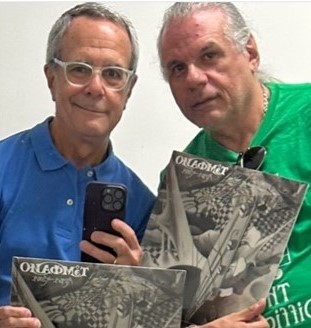
Are you planning something new?
Of course! One of the projects will be the recording of many songs which were intended for a follow-up to ‘Åtabal-Yémal’ that didn’t materialize. 4 of those, in the very early compositional stage, can be found in the bonus CD that is included in PQR’s ‘Åtabal-Yémal’ vinyl reissue, and will be called ‘Selective Memory II’. Another project will be a record with new music, some of which has already been composed, and a third project that is work-in-progress, is mixing a lot of live material to make some live editions.
Exclusive download of the Témpano LP booklet: here!
Equilibrio Vital
Equilibrio Vital released two remarkable albums of equal gravitas that are on top of prog collectors’ lists. ‘Kazmor El Prisionero’ is their second album from 1984. It’s a concept album that will appeal to prog and psychedelia aficionados. Although this is a concept album, each track is marked by its own character, with at least three dominant sub-genres harmoniously co-inhabiting its grooves, namely, hard-rock, progressive, and psychedelia. They briefly reformed two decades later.
Interview with Guillermo Gonzalez and Jaime Moroldo (by Klemen Breznikar)
Would you like to talk about how you first got interested in rock music? Where did you get your first records and when did you begin playing instruments?
Guillermo Gonzalez: I started playing the guitar and the cuatro (traditional instrument from Venezuela) at eleven years of age. I listened to some rock groups of the time on the radio, and the only record I owned was by The Archies. Now, it was really when some friends showed me the Grand Funk Railroad ‘Survival’ record that I said to myself: “I want to be like them; I want to be a musician.” Another record that had a great impact on me was the Woodstock Festival release. From here, little by little I was acquiring records of my preference.
Jaime Moroldo: At the age of 15, I was presented with the opportunity to study in Italy. It was in the days leading up to the trip when I met a friend who became my musical role model. It was thanks to him that I discovered music and realized that it made me feel really good.
I share Guillermo’s opinion regarding the Woodstock Festival, as this event marked a before and after in my life. It opened my eyes and ears to new experiences.
My stay in Italy was a time when I enjoyed a lot of music and attended great concerts, including King Crimson, Jethro Tull, Traffic, John McLaughlin, Ravi Shankar, Paul McCartney, Gentle Giant, Curved Air, Soft Machine, Premiata Forneria Marconi, among others.
Music expanded my perception more and more, and I became more selective in my search for new music to listen to. I had always wanted to play an instrument, but this impulse brought me even closer to music and art.
Would you like to tell us if you were in any bands before forming Equilibrio Vital?
Guillermo Gonzalez: When I arrived in Caracas, the capital of Venezuela, at the age of 18, I formed a band called Antithesis that later, with the incorporation of two new members, we called Obertura and we played symphonic rock and fusion jazz rock.
Would you like to elaborate on the formation of the band?
Guillermo Gonzalez: The group was formed on June 1st, 1980 with Marcos Chacón (guitar and voice), Jaime Moroldo (artist) and Carlos Serga (guitar). On the 18th of that month I joined on bass and flute, and then, gradually, Elena Prieto (voice, writer and actress), Arnoldo Sergas (bass, guitar), Aracely Ramírez (artist) and Laureano Rangel (drums) joined. This was the original formation of Equilibrio Vital, from which Aracely Ramírez, Jaime Moroldo and I are still present.
In 1986 Carlos Serga left the group and was replaced by Maximino Suárez on keyboards, guitar and backing vocals. At the beginning of the 90’s Elena Prieto left the group and from that point onwards there were many changes in the formation of the group. The following line-ups ensued at the time the subsequent records were released by Musea Records:
‘Tributo a Marcos Chacón’ (2003 reissue of the album Equilibrio Vital with the addition of three songs recorded between 2000 and 2001) (Marcos Chacón (guitar, voice), Guillermo González (bass, sax, flute and voice), Jaime Moroldo (graphic design, manager), Aracely Ramírez (assistant manager, organization), Jorge Luis Ayala (drums, vocals), Jacinto González (acoustic guitar).
‘Kazmor el Prisionero’ (2006 reissue of the album ‘Kazmor El Prisionero’ with the addition of five songs recorded between 2004 and 2005 in electro acoustic format) (Guillermo González (acoustic guitar, flute, voice), Jaime Moroldo (graphic design, manager), Aracely Ramírez (assistant manager, organization), Arnoldo Sergas (bass, organization), Endgork Moroldo (keyboards), Jorge Luis Ayala (drums, voice), Cesar Jaime (acoustic guitar), Víctor Pérez (acoustic guitar), Gabriel Abreu (cello).
‘Retorno’ (2010) (Guillermo González (electric and acoustic guitar, flute, voice), Jaime Moroldo (graphic design, manager), Endgork Moroldo (manager, keyboards, design), Aracely Ramírez (assistant manager, organization), Arnoldo Sergas (bass, organization), Jorge Luis Ayala (drums, voice), Cesar Jaime (acoustic guitar).
Jaime Moroldo: I would like to complement the information that Guillermo has provided, especially regarding the multi-art facet. In our early days, we had many ideas, dreams, and projects. I believe that the group’s first major milestone was our first performance, in which all members participated, showing different facets of our abilities.
For this event, we selected various acoustic and electric songs and brought the performance to life with few resources. We worked on the script, set design, and performances to make it possible.
The performance took place on May 3rd, 1981, at “El Caliche,” a cultural space at the Central University of Venezuela in Maracay. It was there where we had the opportunity to present and showcase our multi-art facet.
This facet, always focused on creation, continued to project itself, and in 1990, Aracely Ramírez and I held the exhibition “En Equilibrio Vital” at the Galería Viva México in Caracas. Additionally, along with Endgork Moroldo, we founded the painting and handicraft workshop “Equilibrio Vital,” which produced a significant amount of creative material. In 2004, some of these pieces were taken to the Baja Prog festival in Mexicali, exhibited, and sold.
How did you get signed to Color? What kind of label was it?
Guillermo Gonzalez: Two years after we formed as a band, we gave our first massive concert which was held in the city of Maracay in Pabellón de Industrias Parque de Ferias San Jacinto on October 22th, 1980. Until then, we had only played in small places. At the end of the concert, a person approached us saying that he liked it and that he was a representative of the Color label. He invited us to their headquarters in Caracas to talk about recording an album. This surprised us a lot because, at that time, it was very difficult for a rock band to land a record deal. On the other hand, Color was a label that dealt with recording artists from Venezuela. However, they were not rock bands, but since a boom in this style of music was brewing in the country at that time, the label decided to record some bands from this genre.
How would you describe the Rock scene in Venezuela at the end of the 70s?
Guillermo Gonzalez: Back then, the big concerts that took place were only by foreign artists. Rock bands normally appeared as opening acts because there was a law that obliged concert producers to also present a national band, although they received minimal publicity and technical attention. The same holds with records. Record companies did not record Venezuelan Rock, so the only Rock records that were available were by foreign artists.
However, an economic recession in Venezuela occurred around that time, rather in the early 80’s, and the costs of bringing foreign artists became very high. So businessmen and record labels began to look towards Venezuelan artists and it was in this way that we managed, like other bands, to record our first albums.
Which bands have you shared stages with?
Guillermo Gonzalez: In Venezuela: Cañon, Resistencia, La Misma Gente, Témpano, Piramide, Flamax, Énfasis, Aditus, Dear Force (from USA), EA, Rock and Roll Circus, Premiata Fornería Marconi (from Italy), Tisuby & Georgina and more recently with bands like 3D3, Visión Real, Irina Indigo, Levitico, Sexto Sonar and Ashtar Sheran.
At the Baja Prog Festival 2004, Mexicali, Mexico: Anekdoten (Sweden), Arti e Mestieri (Italy), Cast (with the participation of Alfonso Vidales) (Mexicali, Mexico), Clearlight (USA), Deus ex machina (Italy), Forever Twelve (USA), IQ (UK) , Jaime Rosas Trio(Chile), JJ. Kas (USA), KBB (Japan), Kotebel (Spain), KRé (Venezuela), Matraz (Chile), Oxygenes (USA), Poços & Nuvens (Brazil), Psicotropia (Spain), Richard Sinclair with friends and Glass (England) and Softworks (UK).
What can you tell us about the writing and recording process of your debut album, ‘Equilibrio Vital’?
Guillermo Gonzalez: With the lyrics of the songs we almost always sought to transmit, and we still do, a message of reflection and awareness covering themes such as: “No! To wars,” “You must find your way and your truth,” “Things do not happen by chance,” et cetera. However, it is important to say that one of the main foundations of our musical style is based on a phenomenon that occurs when making music that Marcos Chacón discovered, which he baptized with the name of “Energetic Induction.” This phenomenon stems from the principle that music is an expression of the soul and that the musician must learn to let himself be carried away by it both when composing and playing; the music is telling you what to do. When the musician does so, he is charged with energy and in turn induces that energy to whoever is listening; hence the name energy induction (emotions and feelings are energy). He made us notice it in the group and together we developed and matured this concept for many years, which is why we always treat our music in this way. We also think that this applies to all art forms. For this reason, we started publishing on our YouTube channel and on Facebook a series of micro-videos on musical composition seen from this perspective, as we feel it is important to share it with others.
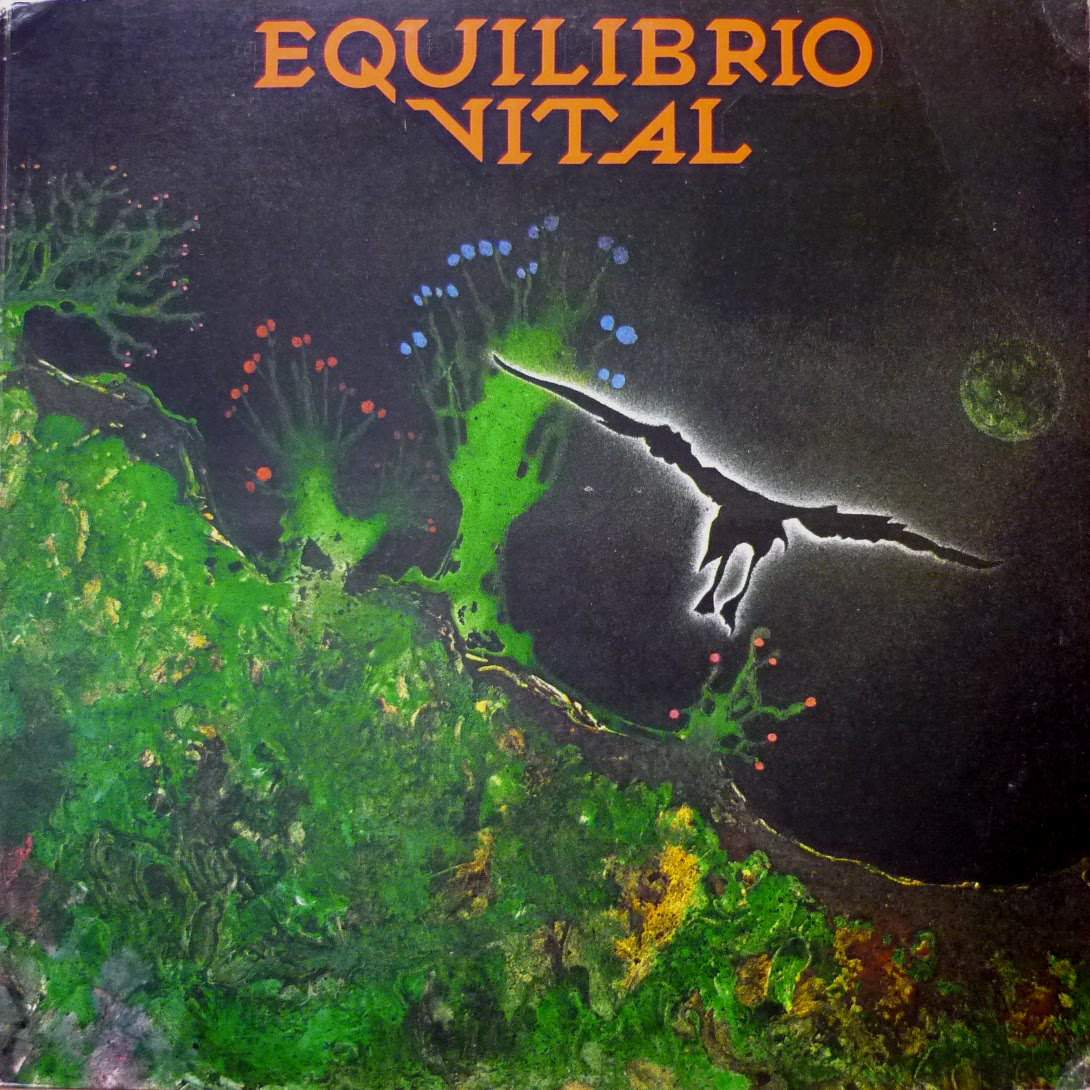
On another note, the songs we chose to record for this album were already part of the repertoire we presented at our first massive concert. Among them was ‘Guerra,’ which was our promotional theme at that time. Most of the songs were by Marcos Chacón in the hard rock genre and one of mine is called ‘Aliento y Esperanza’ where the flute is prominent, in a progressive rock vein.
Jaime Moroldo: To get to this point, we dedicated countless hours to rehearsals, where each of us brought our energy and the best of ourselves. From my perspective, it was a significant moment, as we were ready to materialize team effort, and I believe it was motivating and enriching for everyone involved.
PQR-Disques plusqueréel will be reissuing ‘Kazmor el Prisionero’. Are you excited about it?
Guillermo Gonzalez: Of course, this reissue represents the continuation of the legacy of Equilibrio Vital since we had not published a record since the end of 2010 and that in some way will serve to get closer to the people and show them what we are doing today.
Jaime Moroldo: Yes, of course, the excitement should always remain in these cases because it is always a way to come back and an opportunity to continue showcasing the work.
What can you tell us about the composition of Kazmor el Prisionero? Where was the album recorded?
Guillermo Gonzalez: As is the case with our first album, most of the songs’ lyrics seek to convey a message of reflection and awareness. All pieces were treated with the composition approach that I explained before. For this album we recorded other pieces by Marcos that had not yet been rehearsed, with the incursion of a song by Elena: ‘Prisa’ and another one of mine: ‘Inocentes Perdidos’. The album was recorded at Intersonido studios (Color company studios), just like our first album ‘Equilibrio Vital’.
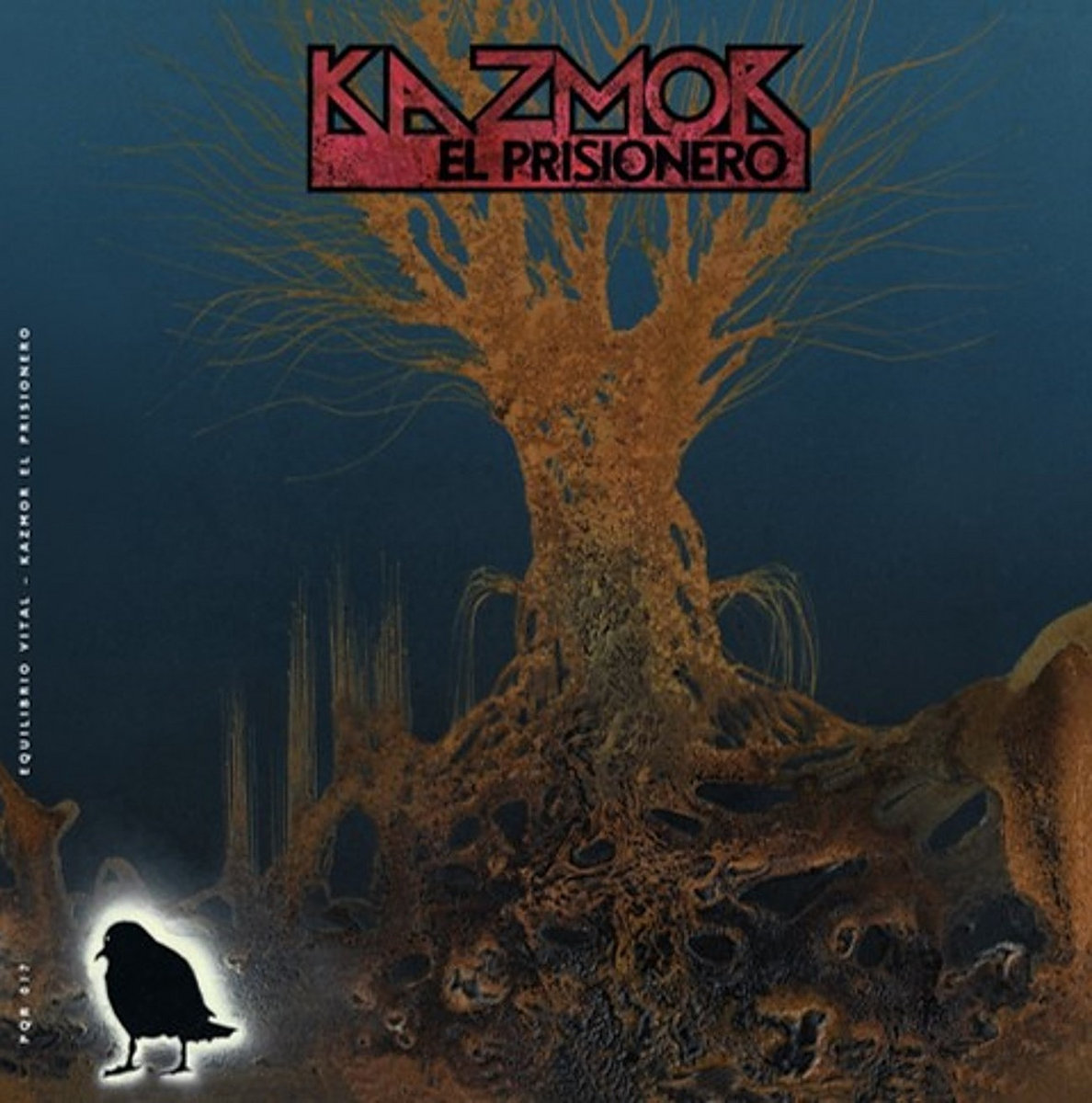
Would you say it’s a concept album?
Guillermo Gonzalez: Yes, as well as the name of one of the songs, of which Elena Prieto wrote the story that we published. This theme has a message that in our opinion summarizes the main message that we have always wanted to convey. For this reason, in the new record that we are currently working on, we will include a version of it. A characteristic of this album is the appearance of more progressive rock songs like ‘Lluvia Cósmica,’ ‘Xskgriglam’ part I and III and ‘Yellenik’.
Jaime Moroldo: Yes, undoubtedly it is. I would like to highlight that on the cover of ‘Kazmorel Prisionero’ that I designed, the bird, which is also our logo, is different from the previous cover of ‘Equilibrio Vital’ where the bird appears in flight. In this new cover, the bird is perched at the foot of an enormous ancient tree, which symbolizes life and wisdom. All of these elements are closely related to what we represent and what we want to share. Our creation has a message that I want to convey.
In addition, the vinyl inner sleeve includes Elena Prieto’s story about ‘Kazmorel Prisionero,’ which adds a literary dimension. Likewise, we have included information and photograph of the band at that time.
Would you like to share some further words about each of the songs?
Guillermo Gonzalez: Well, I can tell you the themes that are addressed in each song’s lyrics:
‘El Ausente’: Song dedicated to the absent.
‘Kazmor El Prisionero’: You are a prisoner of yourself; let your soul escape.
‘Mi Canción Part I’: Song dedicated to relationships.
‘Prisa’: You always live in a hurry without reflecting.
‘Inocentes Perdidos’: Children do not deserve such destruction.
‘Mi Canción Part II’: Song dedicated to relationships.
Jaime Moroldo: I think it would be interesting to talk about the song ‘Advenimiento (Xskgriglam Parte I) Trayectoría (Xskgriglam Parte II),’ as I had the opportunity to contribute small detail at the beginning of the piece. At 14 sec, I was able to add my voice and shout.
Tell us about Trina Noguera, a dancer and back vocalist and what was the idea behind this decision?
Guillermo Gonzalez: Trina was a dancer and her foray as back vocalist was very brief. In both cases nothing concrete was reached regarding her participation.
The band seems to be very popular as you were featured in a documentary about Venezuelan Rock bands recorded at the end of 1983.
Guillermo Gonzalez: In that year the Venezuelan Rock movement was quite visible for the first time in the country’s history. The bands that participated in that documentary were among the best known thanks to the support that the media gave us at that time.
Jaime Moroldo: In December 1983, we took part in the shooting of the movie “Rock Venezolano,” which portrayed the social reality of Venezuela during that time. The filming was intense, and the human warmth of the crowd that attended could be felt throughout.
What can you say about the instruments, gear, effects, pedals you used in the band?
Guillermo Gonzalez: Back then, Marcos Chacón used a Gibson 25th anniversary and an Ibanez multi-effects, as well as a Peavey Special amp and a Sunn amp. Carlos Serga used a Fender Telecaster Custom and a Yamaha amp. Arnoldo Sergas used an Aria Pro II bass and a Yamaha amp and I used a Rickenbacker bass, a Fender Jazz Bass, a Yamaha amp and a Bundy flute.
What followed for the band?
Guillermo Gonzalez: Equilibrio Vital never stopped working and even less is it true that there has been an official dissolution. After publishing two vinyl releases, ‘Equilibrio Vital’ and ‘Kazmor El Prisionero,’ the band continued during the eighties and the nineties, giving many concerts on Venezuelan territory and making independent productions of which some songs were published on radio and television stations in Venezuela. These were later published on the internet as two promotional CDs: ‘Continuidad por siempre’ (2004) and ‘Extremos Temporales’ (2008).
Later, at the end of 1999, Musea Records contacted us through Mr. Alexis Lope-Bello to reissue the material from our two vinyl releases to CD format. But when Alexis saw that the band was still active, he suggested that we include songs from what we were doing at that time and so we did. We include three bonus tracks in the CD reissue of ‘Equilibrio Vital’; two electric and one acoustic.
The reissue of ‘Kazmor El Prisionero’ would come later. However, upon finishing recording these tracks and a while before sending them to Musea Records, Marcos Chacón, founding member and main composer of the band at that time, passed away, leaving me in charge of the musical direction. From that moment onwards we decided to venture for several years in an electro-acoustic direction, sharing the stage in Caracas in 2002 with bands such as Premiata Fornería Marconi and participating soon after in the BajaProg 2004 festival in Mexicali, Mexico, along with bands like IQ, Anekdoten, Clearlight and artists like Richard Sinclair (ex-Camel) and Allan Holdsworth.
For this reason, to the material that was going to be reissued from the ‘Kazmor El Prisionero’ vinyl, we added five tracks.
Later, in 2009, we participated in the projects by the Colossus Magazine from Finland: ‘Tounen Tytär II,’ a tribute to Finnish progressive rock bands, where we performed a version of Jukka Tolonen’s theme: ‘Impression of India’ and Dante Alighieri’s ‘Purgatorio’ with a theme that I wrote called ‘Juicio Final’. In 2010, Musea Records released our third album called ‘Retorno’ with themes by me, Marcos Chacón and Endgork Moroldo. After this, Jorge Luis Ayala, Jacinto González and Apolo Abreu left the group and Nerluis De Andrade joined as the band’s drummer. We continue to perform live in Venezuela and for several years we have concentrated only on studio work. Unfortunately, in 2020 another founding member of the band passed away: Arnoldo Sergas, however, we are currently working on the development of new record material for Equilibrio Vital.
Jaime Moroldo: Like any group, Equilibrio Vital grew in every sense. For us, the concept of family was the best definition to describe our union. In fact, in some interviews, we were already referred to as such. It was not just a posture, but a reality that is felt in every project we undertook. However, as in almost all groups, certain things come to an end for various reasons. Nevertheless, fortunately, other possibilities and new beginnings open up.
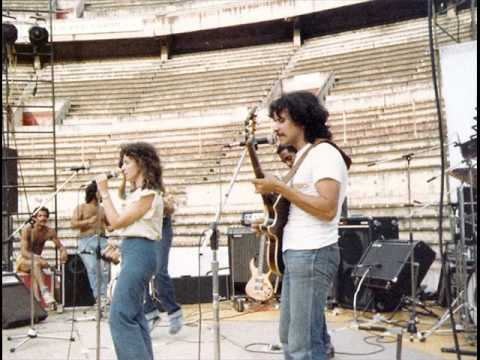
What currently occupies your life?
Guillermo Gonzalez: I am a music teacher. I teach both the instruments that I play in Equilibrio Vital and Musical Composition. I also teach classes in traditional educational schools and give advice to those who wish to undertake a musical project.
Jaime Moroldo: The seed that was sown in the early years of the band flourished in different ways in each of its members. However, since the question is very personal, I will speak of my own experience. Overtime, all of these experiences provided me with valuable lessons, which I strengthened and used to continue cultivating art. I developed various areas, such as design, drawing, graphic arts, and painting. Currently, in addition to using traditional techniques, I also use digital media to express myself. I have ventured into video art the use of artificial intelligence to complement some novel aspects of the image. I also want to highlight there my drive and motivation towards creation. In 2020, together with my son, we created “Creative Exchange Actions,” an initiative that promotes action, creation, art, and exchange through virtual artist intervention projects and collective dynamics among artists from different countries.
Klemen Breznikar
Headline photo: Aditus
PQR-Disques plusqueréel Official Website / Facebook / Bandcamp / YouTube

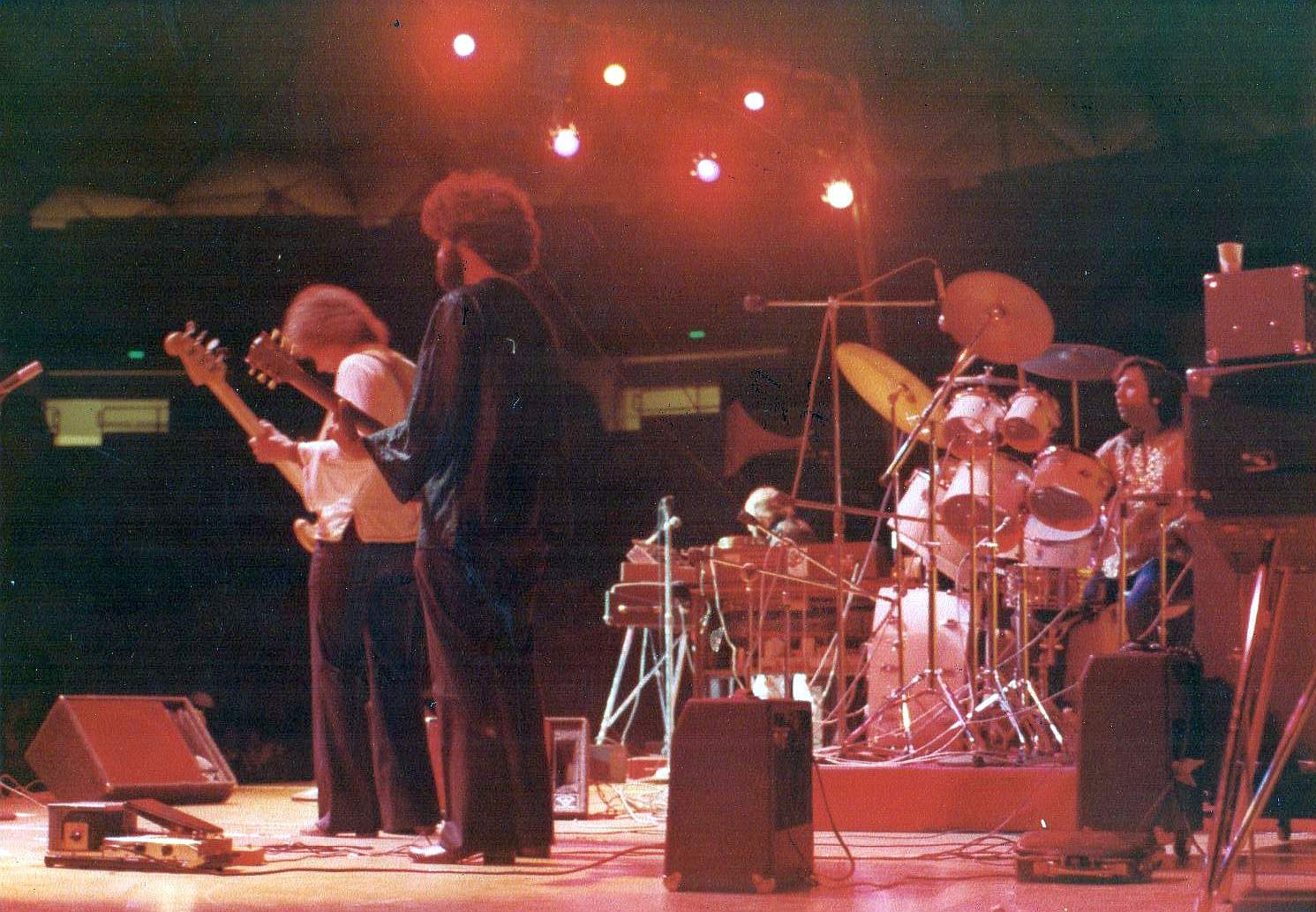
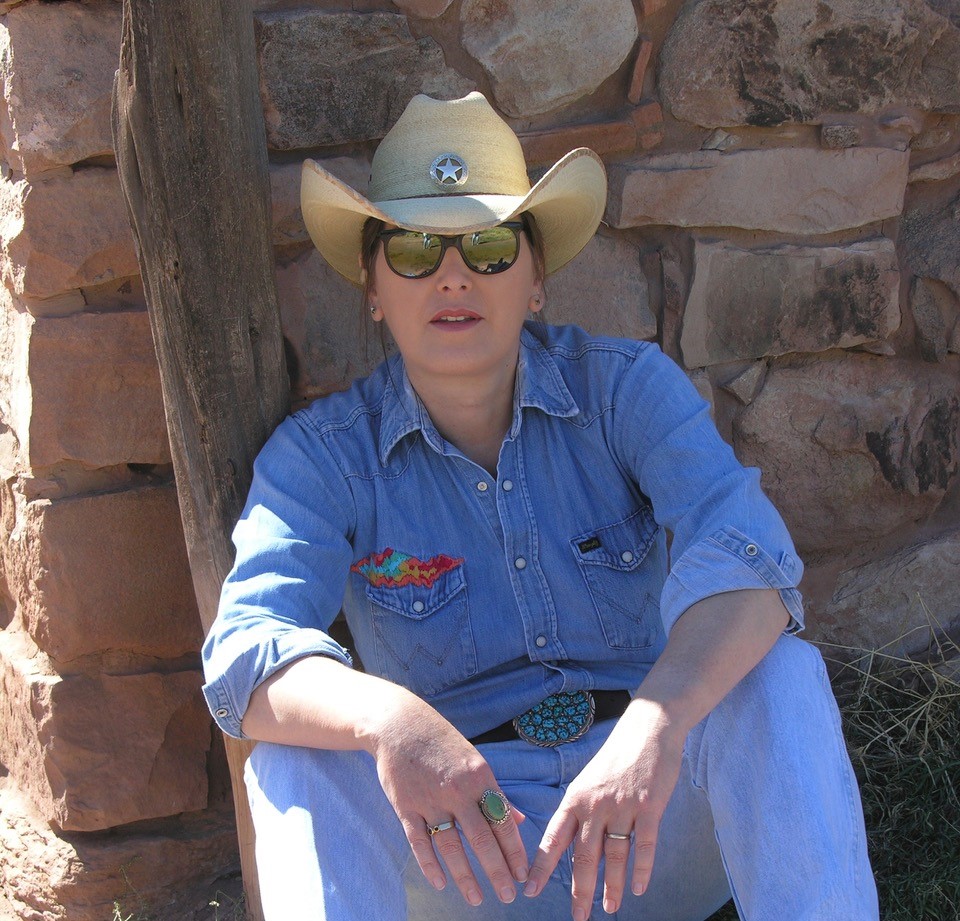
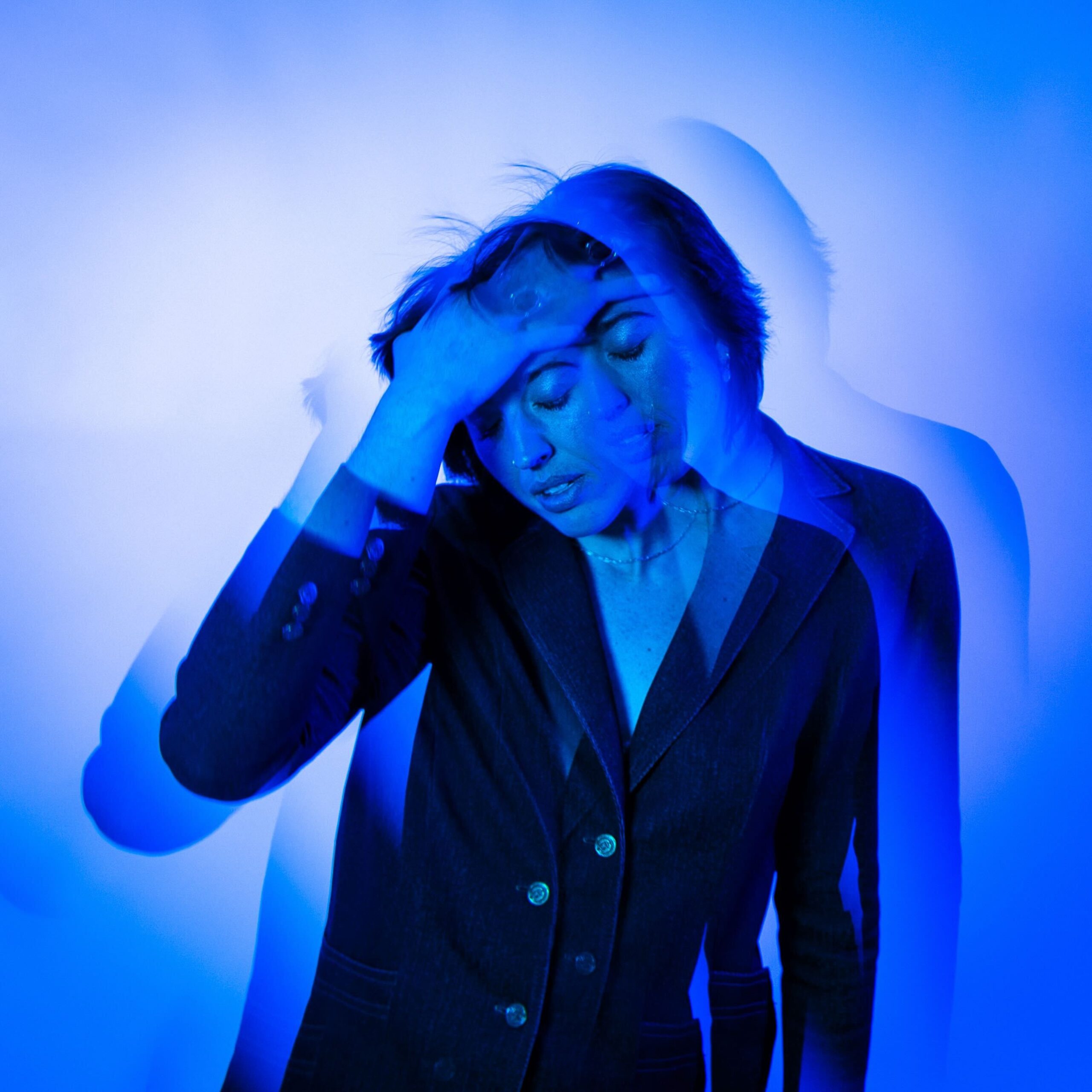
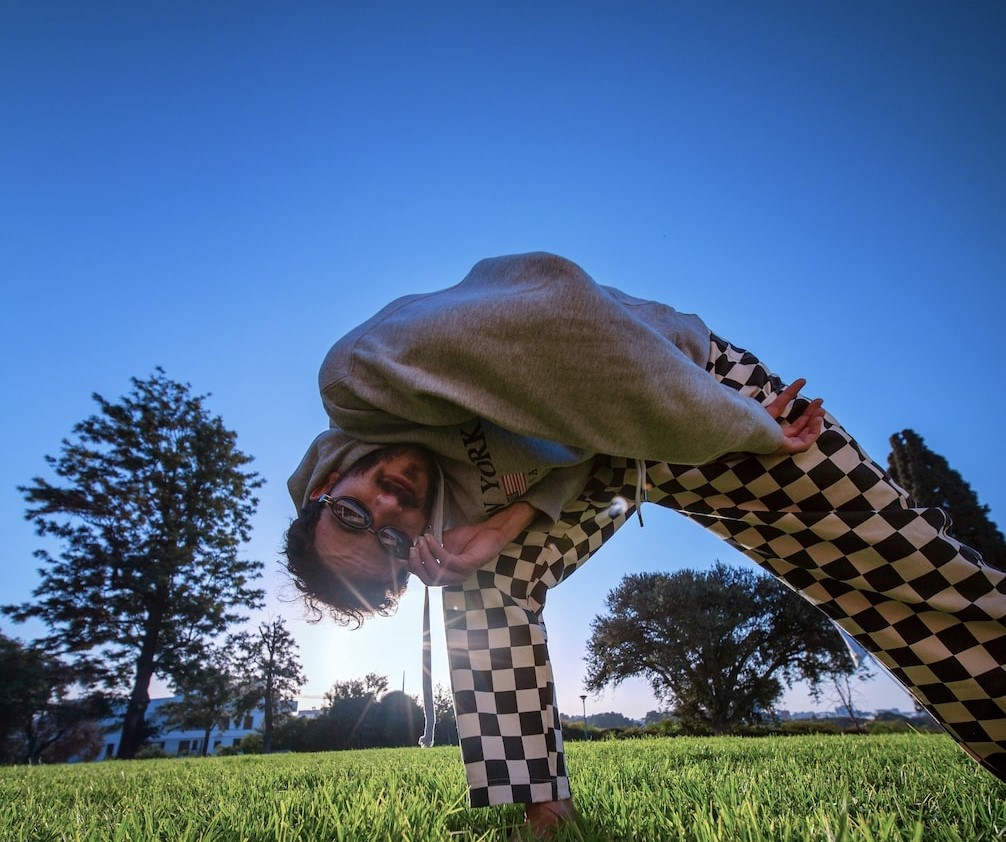
It’s always interesting and quite exciting to discover bands outside of the Anglo-American sphere. Looking forward to listening to these reissues.